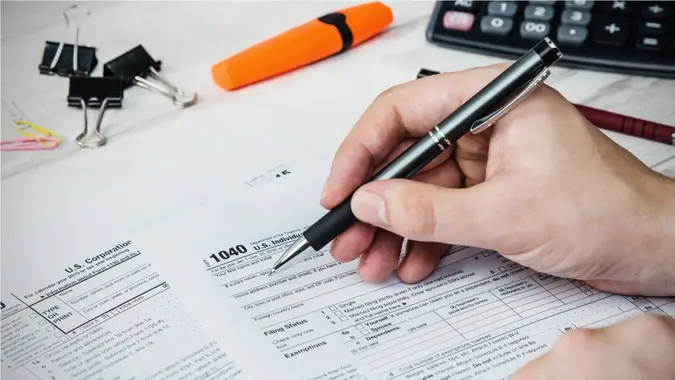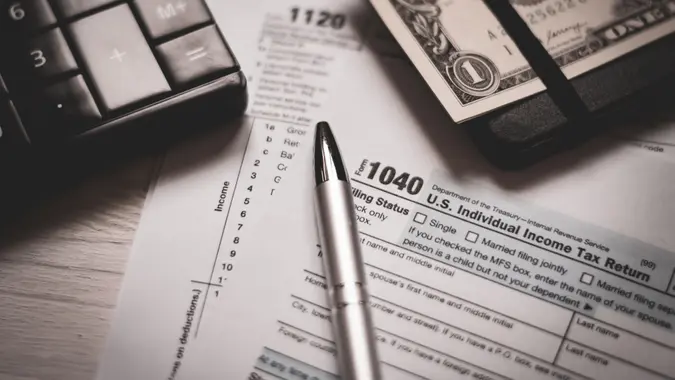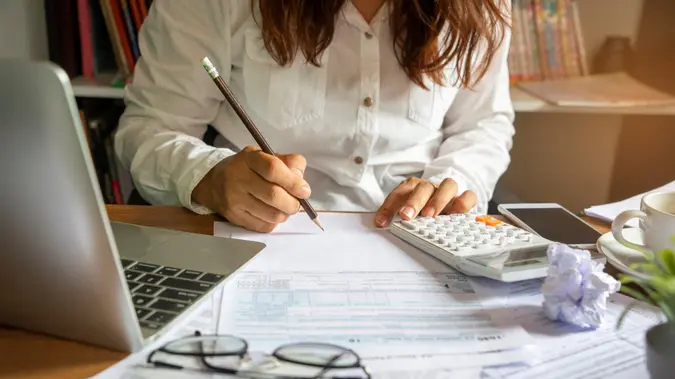4 Ways To Get the Most from Trump’s Below-the-Line Tax Deductions

Commitment to Our Readers
GOBankingRates' editorial team is committed to bringing you unbiased reviews and information. We use data-driven methodologies to evaluate financial products and services - our reviews and ratings are not influenced by advertisers. You can read more about our editorial guidelines and our products and services review methodology.

20 Years
Helping You Live Richer

Reviewed
by Experts

Trusted by
Millions of Readers
Donald Trump signed into law his sweeping and controversial One, Big Beautiful Bill Act (OBBBA) over the summer — a vast and complicated bit of legislation that, as CNBC noted, will potentially bring about massive changes to your taxes, especially in regard to below-the-line deductions (i.e., itemized deductions taken after your Adjusted Gross Income [AGI] that reduce your taxable income).
The finalized OBBB that President Trump signed in July not only made permanent sweeping tax cuts he made in 2017 during his first term, but also brought new relief measures via the United States tax code, especially in terms of deductions.
Raneen Raad, a CPA, tax manager and senior tax advisor at Wealth Enhancement Group told GOBankingRates, “The OBBBA of 2025 introduced several new, below-the-line tax deductions and changes that can significantly impact tax planning.”
Here are some of those deductions (and strategies you can implement) to get the most from your below-the-line deductions in a post-OBBBA America.
Increased Standard Deduction
To counter for inflation, the OBBBA has driven the most common below-the-line deduction — the single standard deduction — from $15,000 to $15,750, per CNBC. Meanwhile the married/joint filing deduction has increased from $30,000 to $31,500.
Increased State and Local Tax Deduction (SALT) Limit
The SALT program allows for deductions regarding property taxes, and local and state income taxes. The OBBBA has increased the SALT limit from $10,000 to $40,000 this year. The limit then has 1% increases between now and 2029, and will revert back to its original limit of $10,000 in 2030.
Additionally, Raad suggested if “you live in high-tax-state, accelerate payments to maximize the $40,000 cap in the years with AGI below the phaseout threshold (phaseout begins at $500,000, fully phased out at $600,000 for married/joint filers).”
Use Senior Deduction Strategically
Raad cautioned senior taxpayers to “consider Roth conversion or managing your retirment distributions to stay under AGI limits and to qualify for the full senior deduction.” The deduction for those 65 and older is $6,000; the income cap for the deduction is $75,000 for single filers, while married/joint filers can make up to $150,000.
Leverage the Auto Loan Interest Deduction
The OBBBA allows for a $10,000 auto loan interest deduction on qualifying vehicles in which final assembly has taken place in the U.S. Raad suggested taking full advantage of the deduction. “If you are planning to purchase a vehicle, choose domestically assembled cars and time the purchase before 2028. This deduction is phased out at Modified Adjusted Gross Income (MAGI) of $200,000 for married/joint filers and $100,000 for single filers.”
 Written by
Written by  Edited by
Edited by 

























